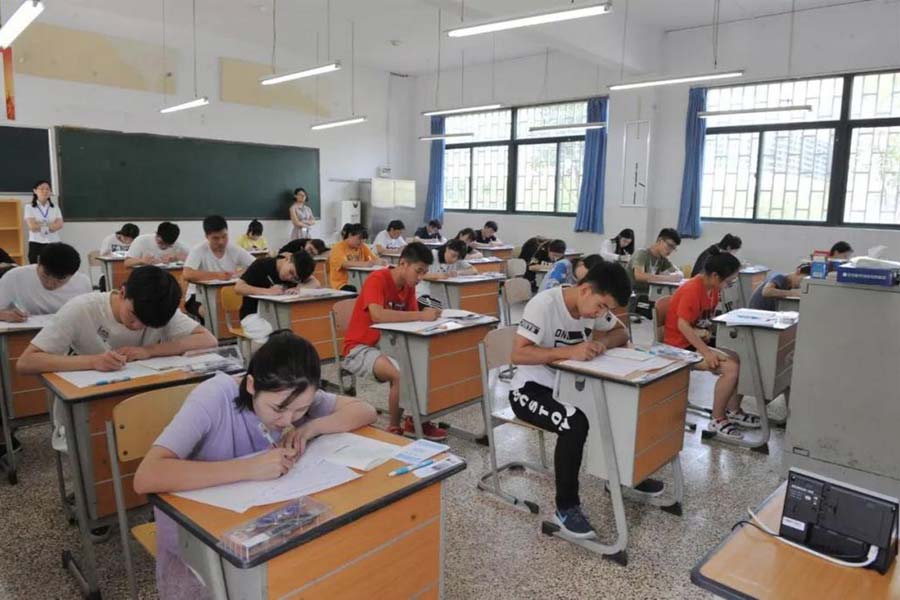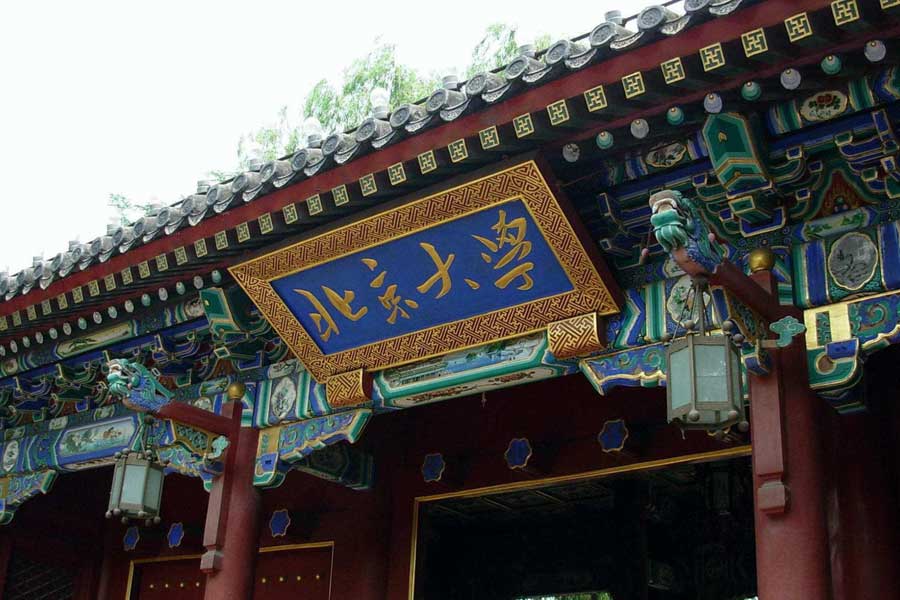Traditional Chinese culture attached great importance to education as a means of enhancing a person’s worth and career. The Chinese education system is considered one of the most challenging and competitive ones in the world, Students are provided with education at different levels.
The Nine-year Compulsory Education System
Compulsory education, also known as free education, is a national education that must be accepted by school-age children and adolescents according to the constitution, and must be guaranteed by the state, society, and family. Compulsory education has the basic characteristics of compulsory, free and universal. The implementation of nine-year compulsory education means that school-age children and adolescents will not pay tuition fees and miscellaneous fees for nine years. The current education system in China is the nine-year compulsory education system.
According to “The Compulsory Education Law of the PRC”(hereinafter referred to as “The Compulsory Education Law”), which was amended and passed by the Standing Committee of the National People’s Congress in June 2006, all school-age children and adolescents who own the nationality of the People’s Republic of China,regardless of gender, nation, ethnicity, or family property status, religious beliefs, etc, have the right to accept compulsory education on an equal footing and fulfill the obligation to accept it. The system was implemented on July 1, 1986.
“The Compulsory Education Law” recognizes and guarantees the rights of school-age children and adolescents to receive compulsory education, including the right to enroll, the right to receive education for a prescribed period, the right to be admitted to the neighborhood school, and the right to have free tuition, etc.
The National College Entrance Examination(高考)
The college entrance examination(also known as the Gaokao) for China’s high school students, generally refers to the entrance examination for higher education, and there are three forms of admission examinations for colleges and universities: national college entrance examination and self-study exams and the national higher education exams for self-taught adults. It is a summary of the three-year academic level of Chinese students in high school. It is a relatively fair, equitable, and open method of talent selection. Based on their grades in the exam, the state distributes students into institutions equivalent to their own learning ability. The college entrance examination is a qualification for candidates to choose and enter a university. It is also one of the national education exams. Gaokao takes place on June 7th and June 8th each year, and some provinces and districts have three days for it.

In November 2018, Eight provinces (cities), including Jiangsu, Hubei, Fujian, Liaoning, Guangdong, Chongqing, Hebei, and Hunan, were evaluated by the Ministry of Education to meet the conditions for the start of the new college entrance examination and were approved for initiation. The reform of the new college entrance examination is mainly reflected in the selection of students and the form of admission. Instead of dividing the Arts and Sciences, it implements the “3+1+2” model: “3” refers to Chinese, mathematics, and foreign language, which are compulsory examination subjects; “1” is the preferred subject. Candidates must choose one subject between physical and historical subjects; “2” is the re-selected subject. Candidates can choose two subjects among the four subjects: chemistry, biology, ideological politics, and geography.
Starting in 2021, ordinary colleges and universities select students according to the scores of 3 national unified examination subjects and 3 general high school level examination subjects, and refer to the comprehensive quality evaluation of ordinary high school students, which is commonly referred to as “two bases, one reference”.
Since the resumption of the college entrance examination in 1977, China’s reforms to the college entrance examination have never stopped, from the national unified test papers to multiple national examination papers, from single selection to multiple admissions in the past 43 years; it has been changing and moving forward in controversy. The ideas of the college entrance examination reform in the new century have gradually become clear, and a more comprehensive and systematic college entrance examination reform is gradually unfolding.
In addition, the hearing-impaired candidates can be exempt from the listening test upon approval of the application. The scores of the foreign language subjects of the disabled candidates who are exempted from the listening test are calculated according to the “written test score × foreign language total score / written test total score”.
The Beijing Education Examinations Institute held a college entrance examination work meeting on May 21, 2015. In the college entrance examination in 2015, candidates must bring an admission ticket and ID card to enter the examination room. If the candidate forgets or loses the ID card (or the admission ticket), the invigilator could verify the appearance of the candidate first. The candidate could enter the room and promise to bring them in the next exam, if he or she was matching to the photo on the admission ticket stub.
Foreign Students studying in China
The system for foreign students studying in China is a management system that aims at regulating the behavior of recruiting, cultivating and managing foreign students, facilitating international students in China, promoting educational exchanges and cooperation internationally, and improving the internationalization of Chinese education. International students refer to the students studying in China without Chinese nationality.
The final training objectives for international students: international students should be familiar with China’s history, geography, society, economy, and other general conditions and cultural knowledge, and understand China’s political system and foreign policies. Besides, they should understand Chinese mainstream and public moral values, which help form good concepts of the law and moral awareness. In terms of language skills, the students taught in Chinese should reach the fifth level of the International Chinese Proficiency Standard when graduate. While those taught in foreign languages shall reach the fourth level when accomplishing the undergraduate course. As for intercultural communication skills, international students in China should have the awareness, knowledge, attitudes and skills to be inclusive, cognizant and adaptive to cultural diversity, and play a role in mutual respect, understanding and solidarity among different peoples, societies and nations.
The Chinese government provides Chinese Government scholarships for foreign students as follows: undergraduate scholarships, postgraduate scholarships,and scholarships for advanced non-degree students. Local governments, colleges, and universities may set up scholarships for foreign students, individually or jointly, as needed.
In-campus management system regulates foreign students’ participation in literary and artistic activities and public welfare activities. However, foreign students are not allowed to obtain occupations, do business, or engage in other business activities during their studies. They can participate in work-study activities as required by the school.
The religious activities of foreign students in China must be managed in accordance with “The Regulations on the Administration of Religious Activities of Foreigners in the People’s Republic of China”. The most basic attitude that should be held at the school management is to respect the national customs and religious beliefs of foreign students, but not to provide places for religious ceremonies. Missionary and religious gatherings are strictly prohibited on campus.
The workbook of Chinese Government Scholarships for International Students was promulgated by the China Scholarship Council and aimed at government scholarship students. The Chinese Government Scholarship Program is a full scholarship and partial scholarship program for international students to promote mutual understanding and friendship between Chinese people and people around the world. The China Scholarship Council is entrusted with students’ enrollment and daily management. This provision is the basis of management work.
Chinese University
As of May 31, 2022, there were 2,914 colleges and universities nationwide, 2,631 ordinary colleges and universities (including 265 independent colleges), and 283 adult higher education institutions.
On September 21, 2017, the Ministry of Education announced the long-awaited list of “double first-class” universities and “double first-class” disciplines. The universities nationwide were divided into several batches, mainly “advance approval” (military schools), “the first batch”(including national key universities) “the second batch”(including provincial institutions), “the third batch” (mainly including independent colleges, Sino-foreign cooperative undergraduate colleges), and “the fourth batch”(higher vocational colleges, i.e. junior college).
The construction of world-class universities and first-class disciplines is referred to as “double first-class”. Building world-class universities and first-class disciplines was another national strategy in China’s higher education sector following the “211 Project” and “985 Project”, which was conducive to upgrading China’s higher education, comprehensive strength and international competitiveness, providing strong support for the Chinese dream of the great rejuvenation of the Chinese nation.
A significant difference between the “double first-class” initiative and the “985” and “211” projects lies in the fact that the focus of construction is on disciplines rather than schools. The mobility between “first-class” and “non-first class” is significantly enhanced, and the ecological structure of the previously solidified universities will gradually be changed.

